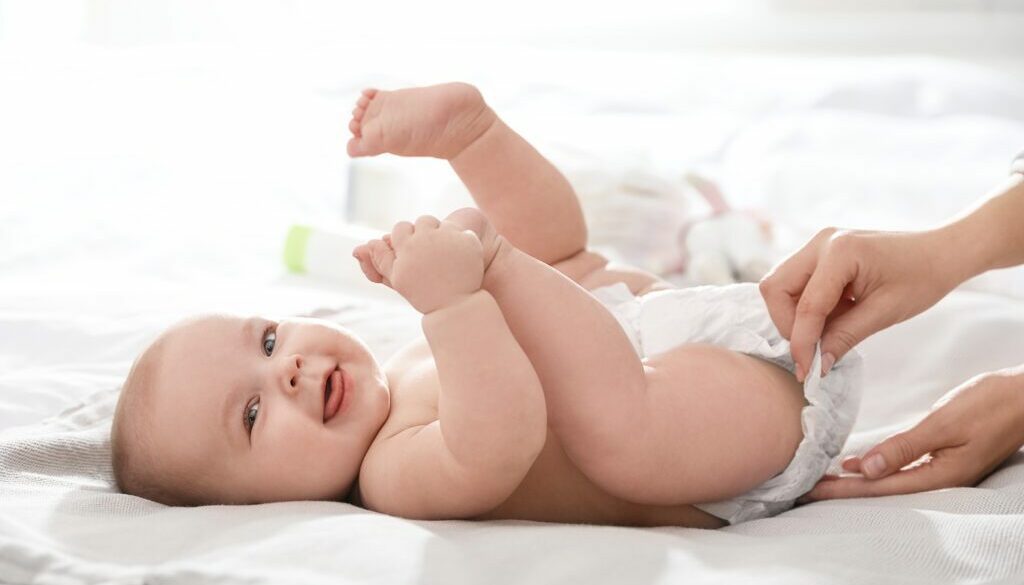Diaper Rash: Expert Tips and Remedies for Your Little One
A baby’s skin is delicate and precious which means it’s also susceptible to irritants. Diaper rash occurs in more than half of all babies. While this condition is common, Dr. Stephanie Cobb with CMC Pediatrics in Carolina Forest wants to assure you that there is plenty you can do to help your baby. She’s offering insight into how diaper rashes occur and giving some effective remedies and prevention methods to protect your baby’s “sweet cheeks”.
Understanding Diaper Rash
“Diaper rash, also known as diaper dermatitis, is a skin irritation that occurs in the diaper area,” explains Dr. Cobb. “It typically manifests as red, inflamed patches on your baby’s buttocks, genitals, and inner thighs. In more severe cases, it can result in blisters, ulcers, or peeling skin. Diaper rash can be uncomfortable for your baby, you may find they are irritable, but it’s usually not a serious medical condition.”
Common Causes of Diaper Rash
- Moisture: Prolonged exposure to moisture is the primary trigger for diaper rash. Urine and feces can irritate a baby’s delicate skin, especially when a diaper is not changed promptly.
- Friction: The friction between the diaper and the baby’s skin can exacerbate diaper rash, especially if the diaper is too tight.
- Chafing: Certain diaper materials or ill-fitting diapers can rub against the baby’s skin, leading to irritation.
- Skin Sensitivity: Some babies have sensitive skin, making them more prone to diaper rash.
- Diet: In some cases, changes in a baby’s diet can affect the acidity of their urine or stool, increasing the likelihood of diaper rash.
Treatment & Prevention
“Understanding diaper rash and what causes it is half the battle when it comes to treating and preventing it,” says Dr. Cobb. “Keep in mind those common causes and that can help you stay ahead of it and prevent it.”
The following are some of Dr. Cobb’s biggest tips for managing and avoiding diaper rash:
- Frequent Diaper Changes One of the simplest and most effective ways to prevent diaper rash is to change your baby’s diaper frequently. Keeping your baby’s bottom clean and dry helps minimize the exposure to moisture and waste products that can lead to irritation.
- Gentle Cleansing When changing diapers, use a gentle and mild baby wipe or a soft cloth dampened with water to clean your baby’s bottom. Avoid using harsh soaps, fragrances, or alcohol-based wipes, because these can irritate sensitive skin more.
- Let the Skin Breathe Whenever possible, allow your baby’s bottom to air out without a diaper. Lay them on a soft towel or blanket and let their skin breathe for a few minutes. This can help reduce moisture buildup and promote healing.
- Barrier Creams and Ointments Applying a protective cream or ointment can create a barrier between your baby’s skin and moisture, reducing the risk of diaper rash. I suggest looking for products containing zinc oxide or petroleum jelly. Remember to apply a thin layer during each diaper change.
“Many parents under-apply these creams. I recommend that when your baby has a rash you want to apply a very thick layer of it—like icing on a cake,” advises Dr. Cobb. “That’s how you’ll know you are creating an effective barrier.” - Use Diapers that Fit Well Choosing the right-sized diaper is crucial. Diapers that are too tight or too loose can lead to friction and increased irritation. Make sure the diaper fits snugly but comfortably around your baby’s waist and legs.
- Avoid Irritating Fabrics When it comes to clothing, opt for breathable fabrics like cotton. Avoid tight-fitting pants or diapers with harsh elastic that can rub against your baby’s delicate skin and exacerbate the rash.
When To Call Your Pediatrician
Most mild diaper rashes can be treated at home. It might take a few weeks for the rash to completely go away. But it should start to improve after just a few days of following the above tips.
“If your child’s rash is severe or isn’t showing signs of improvement after several days or is worsening, call your pediatrician,” urges Dr. Cobb. “Sometimes this could mean a fungal infection is involved. Your pediatrician will have the ability to prescribe a fungal medicine or a mild steroid cream that can treat the infection and help your baby heal.”
You should also call the doctor if your child:
- Has a fever (over 100.4) with the rash
- Has bruises, bleeding, or open sores in the area
- Is in a lot of pain or discomfort
- Is losing weight or seems sick
Diaper rash is a normal part of babyhood, but your baby doesn’t have to suffer. Watch for rashes so you can treat them early. If you have any concerns, call a pediatrician like Dr. Stephanie Cobb with CMC Pediatrics in Carolina Forest.

Dr. Stephanie Cobb
Dr. Cobb is a pediatrician who cares for children of all ages from newborns to teens. She enjoys preventative care medicine and promoting overall health with nutrition, sleep hygiene, and exercise. She has been involved in a variety of missions trips including to the Dominican Republic, Costa Rica, and Ecuador.






